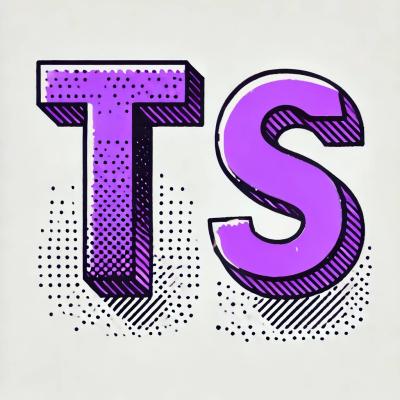gl-util 
Set of practical functions for webgl.

const u = require('gl-util');
let gl = u.context(canvas)
let prog = u.program(gl, `
precision mediump float;
attribute vec2 position;
void main() {
gl_Position = vec4(position * 2. - 1., 0, 1);
}
`, `
precision mediump float;
uniform vec4 color;
void main () {
gl_FragColor = color;
}
`);
u.attribute(prog, 'position', [0,0, 1,0, 0,1]);
u.uniform(prog, 'color', [1, .2, 0, 1.]);
gl.drawArrays(gl.TRIANGLES, 0, 3);
API
context(container|canvas|options?)
Create and/or return WebGL context for the canvas element, possibly based on options. If container is not defined, document.body is used.
canvas | A canvas element to obtain context for. |
container | An element to create canvas in and return context for it. |
width | If specified, will set the canvas width. |
height | If specified, will set the canvas height. |
pixelRatio | Multiplier for width and height. |
attributes | Attributes object. Available attributes: alpha, depth, stencil, antialias, premultipliedAlpha, preserveDrawingBuffer and failIfMajorPerformanceCaveat. |
const getContext = require('gl-util/context')
let gl = getContext({
attributes: {
antialias: true
}
})
prog = program(gl, prog|vert?, frag?)
Set active program or create a new program from vertex and fragment sources. Programs are cached for the context by source. The WebGLProgram instance is returned.
const program = require('gl-util/program')
let prog = program(gl, `
precision mediump float;
attribute vec2 position;
void main() {
gl_Position = vec4(position * 2. - 1., 0, 1);
}
`, `
precision mediump float;
uniform sampler2D image;
uniform vec2 shape;
uniform float x;
void main () {
gl_FragColor = texture2D(image, gl_FragCoord.xy / shape);
}
`)
program(gl, prog)
unif = uniform(gl|program, {name: data, ...} | name?, data?)
Get/set uniform or multiple uniforms. Returns an object with uniform parameters: {name, location, data, type}. Uniforms are stored per-program instance.
const uniform = require('gl-util/uniform')
uniform(gl, 'color', [1, .2, 0, 1]);
txt = texture(gl, {name: params, ...} | name?, params?)
Set texture[s] data or parameters:
data | Data passed to texture. Can be array, typed array, image, canvas or string denoting the URL of image to load. |
index | Texture unit number, if undefined - calculated automatically. |
filter | Sets texture scaling for both min and mag. Can be defined as two separate properties minFilter and magFilter. By default gl.LINEAR. |
wrap | Defines texture tiling vertically and horizontally. Can be defined precisely as wrapS and wrapT. By default gl.CLAMP_TO_EDGE, can be gl.MIRRORED_REPEAT or gl.. |
width | In pixels |
height | In pixels |
format | gl.ALPHA, gl.RGB, gl.RGBA (default), gl.LUMINANCE, gl.LUMINANCE_ALPHA, gl.DEPTH_COMPONENT, gl.DEPTH_STENCIL, etc |
type | gl.UNSIGNED_BYTE, can be gl.FLOAT with proper extension enabled |
level | 0, mipmap level. |
Returns object with texture properties {data, index, location, minFilter, magFilter, wrapS, wrapT, width, height, format, type, texture}.
const texture = require('gl-util/texture')
let {width, height} = texture(gl, 'image', './picture.gif');
attr = attribute(gl, {name: params, ...} | name?, params?)
Set attribute[s] data or parameters:
data | null | Data for the attribute, can be array, typed array or array buffer |
size | 2 | Number of data items per vertex |
stride | 0 | Offset in bytes between the beginning of consecutive vertex attributes. |
offset | 0 | Offset in bytes of the first component in the data. Must be a multiple of type. |
type | gl.FLOAT | Data type of each component in the data array. Must be one of: gl.BYTE, gl.UNSIGNED_BYTE, gl.SHORT, gl.UNSIGNED_SHORT, gl.FLOAT. |
usage | gl.STATIC_DRAW | Mode of draw: gl.STATIC_DRAW (rare changes), gl.DYNAMIC_DRAW (frequent changes) or gl.STREAM_DRAW (frequent updates) |
normalized | false | If fixed-point data values should be normalized or are to converted to fixed point values when accessed. |
index | 0 | Attribute unit number, detected automatically if omitted. |
target | gl.ARRAY_BUFFER | |
buffer | null | WebGLBuffer to use for attribute |
Returns attribute properties {data, size, stride, offset, usage, type, normalized, index, target, buffer}.
const attribute = require('gl-util/attribute')
attribute(gl, 'position', [0,0,1,0,0,1]);
clear(gl, optsion?)
Clear the viewport.
Motivation
There are regl, stack.gl and many other WegGL components or frameworks, so why gl-util?
- WebGL frameworks API is usually difficult to remember, not much better than pure WebGL, although regl does a great job. gl-util is like functions from any WebGL tutorial - tiny, handy and already familiar.
- gl-util does not supersede WebGL API - that allows for debugging pure WebGL at any moment.
- gl-util is tiny - if one needs minimalistic WebGL setup it may be better to opt for a couple of functions than massive stack.gl components or regl (70kb+).
- regl API may be cumbersome for organizing components
License
(c) 2018 Dmitry Yv. MIT License
so




